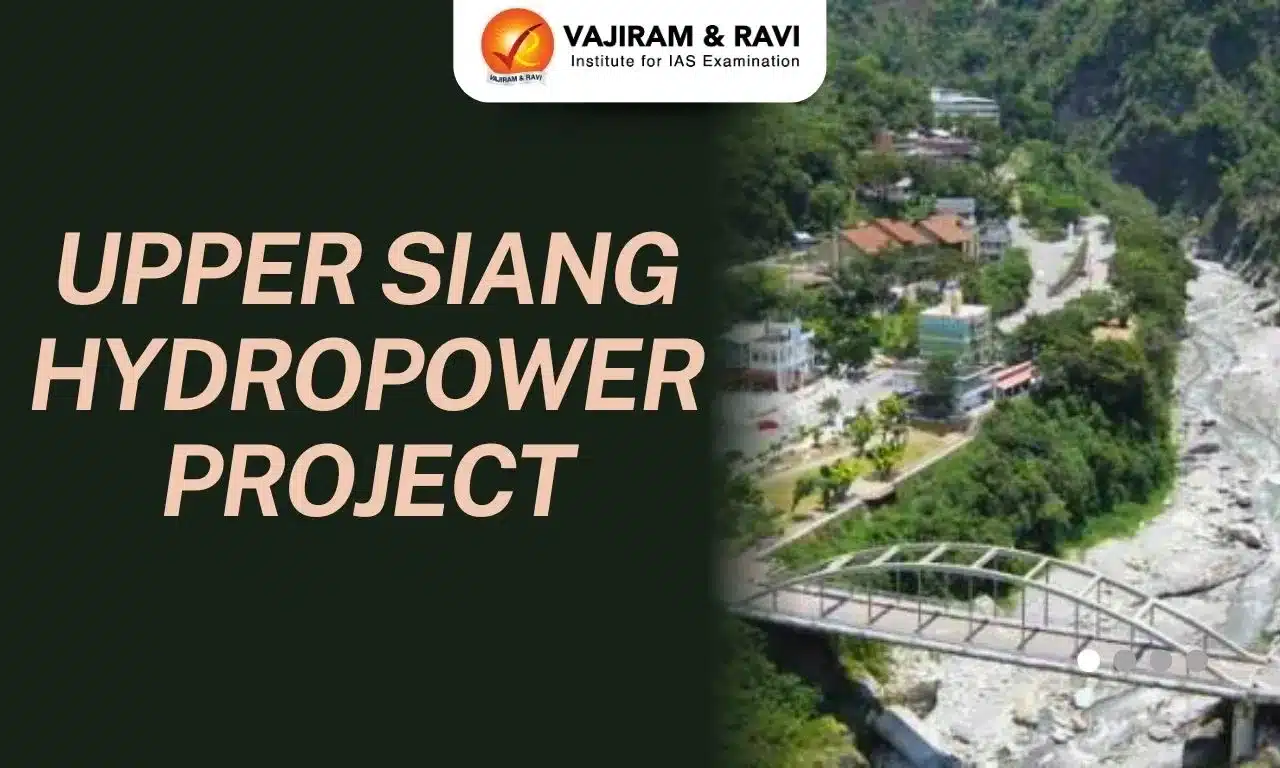About the Upper Siang Hydropower Project
- The Upper Siang Hydropower Project is a proposed 11,000 MW hydropower plant located on the Siang River in the Upper Siang district of Arunachal Pradesh.
- The Siang River is the upper course of the Brahmaputra River, revered as Aane Siang (Mother Siang) by locals.
- This project is envisioned as a strategic countermeasure to China’s proposed 60,000 MW super dam on the Yarlung Tsangpo (Brahmaputra) in Tibet’s Medog County.
Key Details of the Project
- Developers: Jointly undertaken by the National Hydroelectric Power Corporation (NHPC) and the North Eastern Electric Power Corporation (NEEPCO).
- Pre-Feasibility Report (submitted in December 2022):
- Installed Capacity: 11,000 MW.
- Reservoir Storage: 9 billion cubic meters (BCM).
- Estimated Cost: ₹1,13,000 crore.
- The area is primarily inhabited by the Adi Tribe, an indigenous community with a strong connection to the Siang River.
- Residents rely on pani kheti (settled agriculture along riverbanks) for sustenance, as the hilly terrain offers limited farming opportunities.
The Adi Tribe
- The Adi Tribe speaks Tibeto-Burman languages and traces its origins to southern China in the 16th century.
- They are skilled artisans, especially in crafting items from cane and bamboo.
- Major festivals include:
- Solung: Harvest festival involving animal sacrifices.
- Aran: Hunting festival.
- Unique practices: The Motor or Pator system, a ritual involving self-restriction through village lockdowns to locate wild herbs during epidemics.
Q1) Where does the Brahmaputra River originate and flow?
Originating from the Angsi Glacier in Tibet, the Brahmaputra flows through China as the Yarlung Tsangpo, enters India through Arunachal Pradesh, and traverses Assam before merging with the Ganges in Bangladesh to form the Meghna River system.
Source: IE
Last updated on December, 2025
→ Check out the latest UPSC Syllabus 2026 here.
→ Join Vajiram & Ravi’s Interview Guidance Programme for expert help to crack your final UPSC stage.
→ UPSC Mains Result 2025 is now out.
→ UPSC Notification 2026 is scheduled to be released on January 14, 2026.
→ UPSC Calendar 2026 is released on 15th May, 2025.
→ UPSC Prelims 2026 will be conducted on 24th May, 2026 & UPSC Mains 2026 will be conducted on 21st August 2026.
→ The UPSC Selection Process is of 3 stages-Prelims, Mains and Interview.
→ UPSC Result 2024 is released with latest UPSC Marksheet 2024. Check Now!
→ UPSC Toppers List 2024 is released now. Shakti Dubey is UPSC AIR 1 2024 Topper.
→ Also check Best IAS Coaching in Delhi

















